Can You Cut a Live Wire? (Impacts, Tools, Guidance)
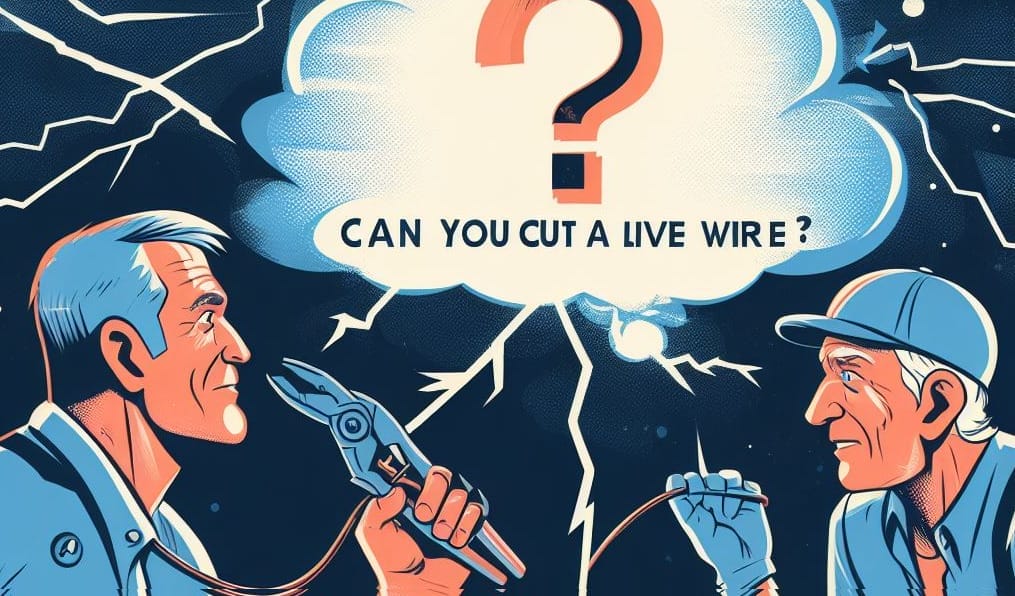
Have you ever found yourself staring at a tangle of wires and wondering, “Which of these can I safely touch?’ or even, ‘What happens if I accidentally cut one?’ If so, you’re not alone. Most of us, at some point or another, have been tempted to fix minor electrical issues ourselves.
Dealing with electrical wires can be risky. Even the seemingly harmless ones can deliver a shock, as experienced by a 35-year-old DIY enthusiast, John. Wires such as the ‘hot’ or live wire, often black or red, carry active electricity.
We’ll be discussing why cutting a live wire is hazardous and what precautions should be taken if you ever need to handle one. Safety first – always remember that!
Let’s look into more detail below.
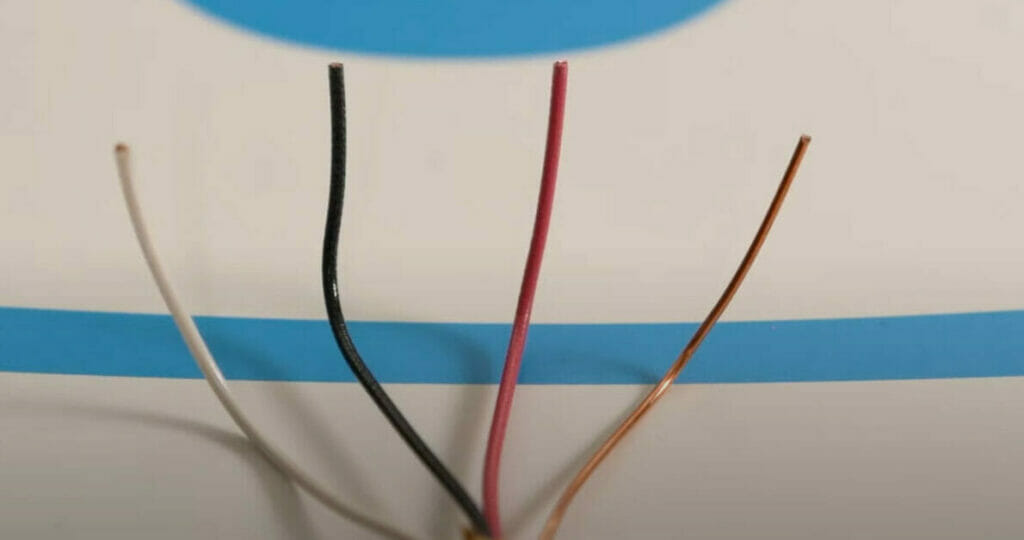
Unpacking the Details: What You Should Know
I’m sure you’ve all heard of live wires, but what exactly are they? Well, in the simplest terms, a live wire is an electrical wire that carries current. It’s the one that brings electricity to your appliances and devices. But there’s a lot more to it than that.
The term ‘live’ originated during the days of direct current (DC) systems, where touching such a wire resulted in a jolt. In today’s alternating current (AC) systems, it refers to any wire with active electricity.
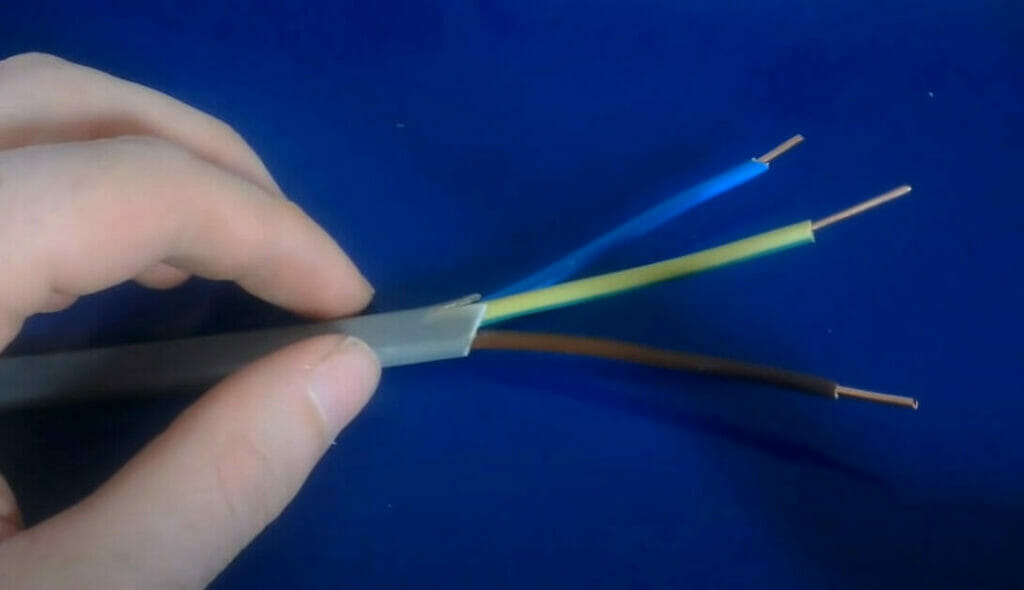
Residential Wiring Basics
Residential electrical systems typically have three wires: hot, neutral, and ground.
Hot (Live) Wire: This wire, often black or red, returns unused electricity back to the source.
Neutral Wire: Typically white or gray, unused electricity back to the source
Ground Wire: Recognizable by its green hue, it provides a path for electric charge in case of faults.
Wire Color Codes by Region
Have you ever wondered why different countries have different colors for these wires? Here’s how it goes:
| Region | Hot (Live) | Neutral | Ground |
|---|---|---|---|
| US/Canada | Black/Red/Blue | White/Grey | Green |
| UK/Europe/Australia/NZ | Brown | Blue | Green/Yellow Stripe |
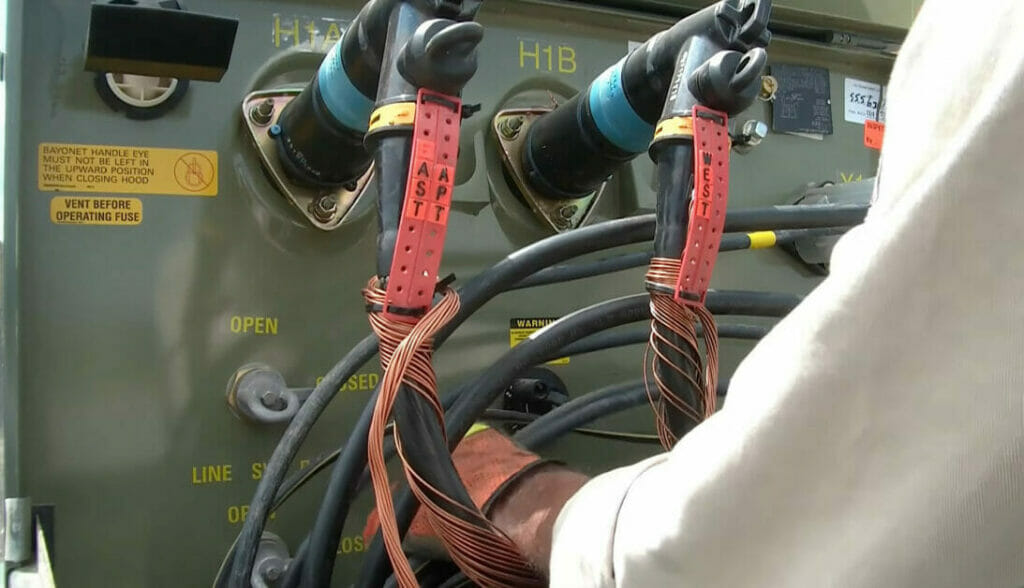
Cutting a Live Wire
The question, “Can you cut a live wire?” leads to an answer that might appear simple, but the underlying implications are far from it.
Let’s get to the point: Cutting into any electric cable with current flowing through it is HIGHLY DANGEROUS. You’re not only risking severe electric shock but also potential fires or even explosions if there’s flammable material nearby.
While sometimes required to conduct ‘hot work’ on live circuits, professional electricians are armed with intensive training, specialized equipment, and an acute awareness of the risks. The perils are so significant that many regions enforce stringent regulations on such activities.

The Reality of ‘Hot Work’
- “Hot work” is the practice where professional electricians work directly on live electrical lines.
- These professionals possess intensive training, specialized tools, and safety gear for high-risk tasks.
- The decision to engage in hot work is not taken lightly; it involves thorough risk assessments and a comprehensive understanding of the electrical system.
- Regulatory bodies have set strict guidelines governing when and why hot work is permissible, emphasizing its potential dangers.
- While it exemplifies the skill and expertise of trained electricians, it’s crucial to note that hot work is not a casual task but a testament to professionals’ respect for the inherent risks and their commitment to ensuring safety.
Steps to Safely Cut a Live Wire
Before we dive into the steps, it’s critical to know that tampering with live wires can be DANGEROUS. I cannot stress enough the importance of safety precautions when handling electrical wires.
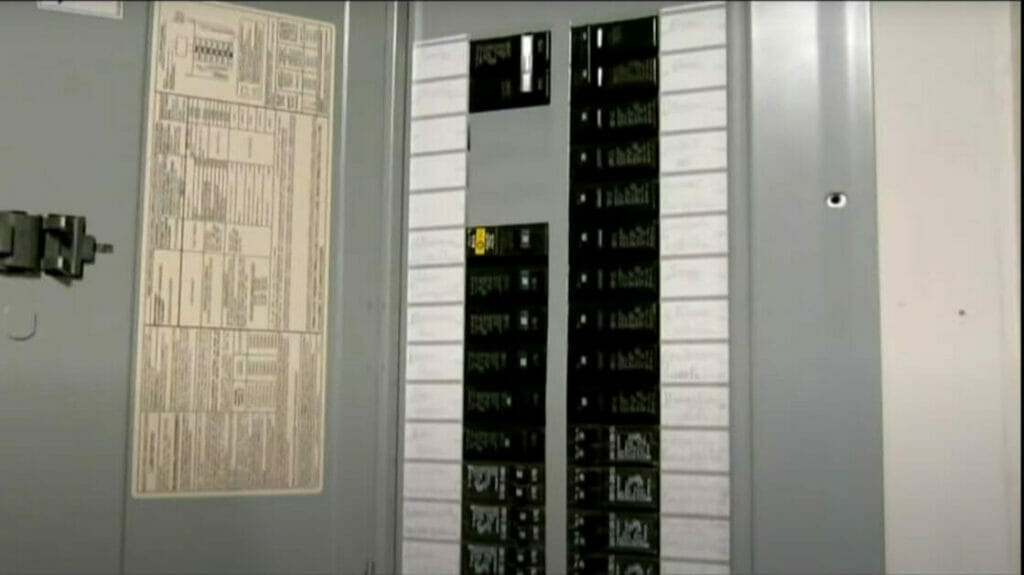
Step 1: Disconnect the Power
First and foremost, turn off the circuit breaker that controls the wire you plan to cut. This is an essential step in preventing electric shocks.
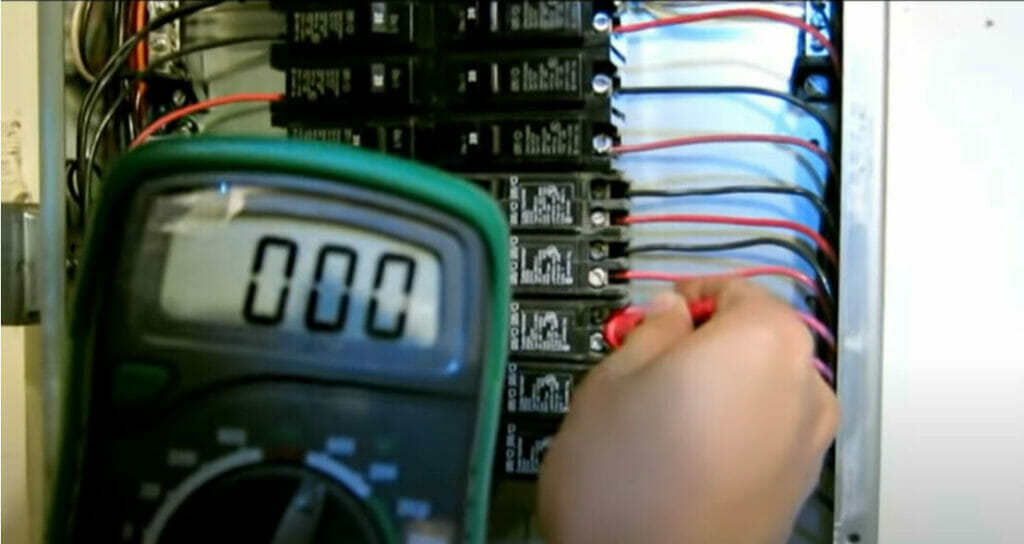
Step 2: Test for Power
Even after shutting off power at the source, always use a voltage tester before proceeding. It’s better to double-check than risk an electrical shock!
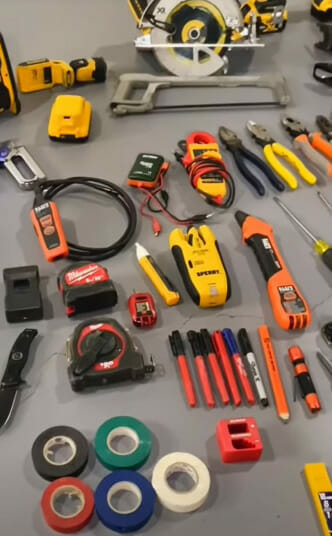
Step 3: Use Insulated Tools
Never underestimate the value of good equipment! Always use tools specifically designed for electrical work – pliers and wire cutters with insulated handles.
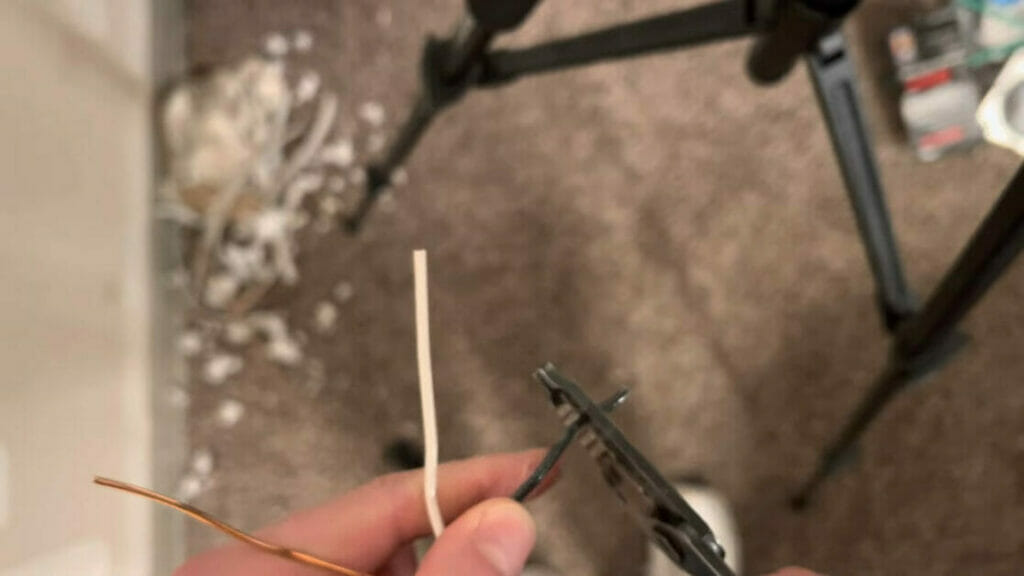
Step 4: Cut Perpendicular to the Wire
Make your cut at a right angle (90 degrees) to ensure a clean break without damaging surrounding insulation or wires.
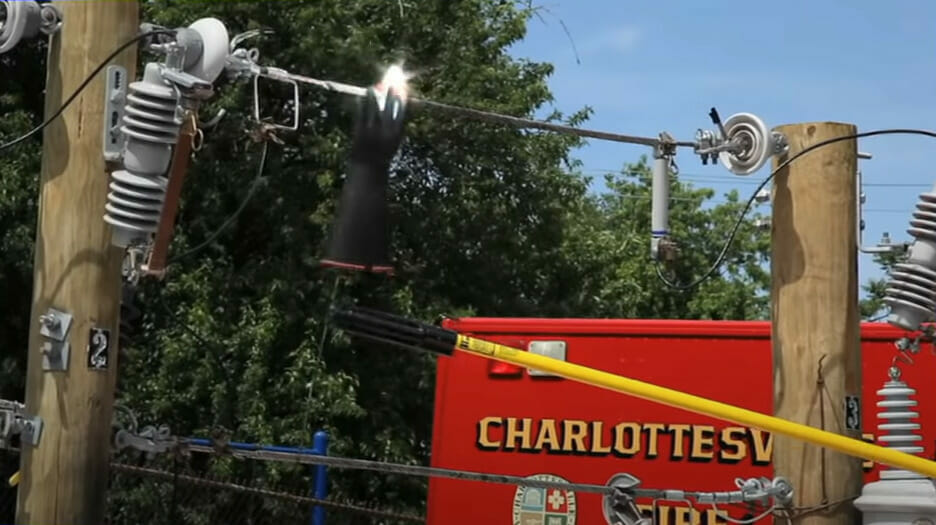
Hazards of Live Wire
Cutting a live wire comes with significant risks, from severe electric shocks to potential fires.
Statistics from the Electrical Safety Foundation International reveal that home electrical fires account for an estimated 51,000 fires and more than 500 deaths yearly.
Here’s a concise breakdown of the dangers one might encounter when cutting a live wire, emphasizing the importance of safety and professional expertise:
| Danger | Description |
|---|---|
| Electric Shock | Direct contact can cause electricity to pass through the body, potentially leading to severe injury or death. |
| Burns | Shocks can cause entry and exit burns, ranging from minor to severe third-degree injuries. |
| Cardiac Complications | Shocks can disrupt heart rhythms, possibly leading to cardiac arrest or irregular heartbeats. |
| Muscle Contractions | Electric shocks can cause involuntary contractions, risking secondary injuries if holding tools or in a precarious position. |
| Fire Hazard | Sparks from cutting can ignite flammable materials; heat from short circuits can also pose a fire risk. |
| Explosions | In areas with flammable gases or vapors, sparks can lead to explosions. |
| Equipment Damage | Cutting can damage connected devices due to sudden surges, potentially frying electronics. |
| Arc Flash | Short-circuiting can cause arc flashes, producing intense heat and explosive qualities, sending molten metal and debris flying. |
| Falls | Shocks can cause falls from ladders or platforms, resulting in additional injuries. |
| Neurological Effects | Shocks can lead to short-term numbness or long-term conditions like memory problems or difficulty concentrating. |
| Respiratory Arrest | Interference with respiratory muscles can lead to respiratory failure. |
Safety Checklist: Handling Wires with Care
Before we dive deep into the nitty-gritty, let’s set one thing straight – safety comes first.
Cutting a live wire is not child’s play and demands extreme caution. I’m sure you’ve heard that line before, but it rings especially true in this circumstance.
| Wear | Purpose | Tips & Remarks |
|---|---|---|
| Safety Glasses | Protect eyes from sparks, debris, or bits of wire | Choose ones that fit snugly and offer side protection |
| Rubber Gloves | Insulate hands from potential electric shocks | Ensure they’re rated for electrical work and are free from holes or wear |
| Rubber-soled Shoes | Provide grounding and reduce the risk of electrical shocks | Ensure they’re free of holes and are non-conductive |
| Insulated Tools | Protect against electric shocks during tool handling | Always check the insulation for damage before use |
| Hard Hat | Protect head from falling objects or accidental bumps | Recommended, especially if working in construction sites or areas with overhead risks |
| Ear Protection | Protect from loud noises, especially during drilling or heavy machinery use | Earplugs or earmuffs can be used based on comfort and noise levels |
| Dust Mask | Protection from dust or debris, especially when drilling into walls | Not a replacement for respiratory masks when working with hazardous materials |
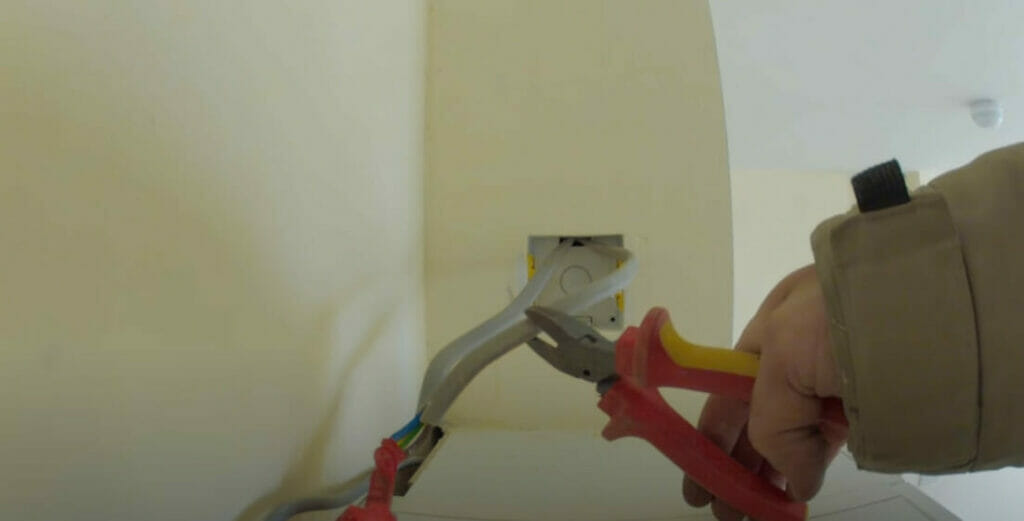
Electrical Safety: What to Avoid
Navigating the intricacies of electrical work can be daunting. Here, we outline pivotal safety precautions while handling electrical wires and systems.
Let’s delve into some essential measures to keep you safe.
- Avoid Cutting Live Wires: Engaging with live electrical wires is a grave error. The hazards associated with such an action are immediate, like shocks, and can lead to more complicated issues like fires.
- Power Disconnect is a Must: Switching off the power at the source is paramount before interacting with electrical wires. This simple step can prevent many accidents.
- Limitations of Protective Equipment: While rubber gloves and tools like pliers can offer some protection, relying solely on them can be misleading. They minimize the risk but don’t eliminate it entirely.
- Respect All Voltage Levels: It’s a misconception that only high voltages are dangerous. Lower levels, specifically between 50-150 volts, can be deadly.
- Grasp the Impact of Small Currents: The severity of electric shocks isn’t always about the voltage. A current as minimal as 5 milliAmps can result in serious, lasting damage. Always prioritize safety and caution over assumptions.
Now let me give you some shocking facts:
| Voltage Level | Potential Harm |
|---|---|
| 50-150 Volts | Can cause death |
| 5 milliAmps | Enough to cause irreversible damage |
Frequently Asked Questions
- How can I recognize a live wire if it’s not color-coded?
- While color codes are standard in many regions, assuming a wire’s function based solely on its color is never safe. Always use a voltage tester or multimeter to determine if a wire is live before handling it.
- Is it true that only high voltage is dangerous?
- No, even voltages as low as 50-150 can be lethal. The danger often lies in the amount of current (measured in milliAmps) that passes through the body, not just the voltage.
- How often should I check my home’s wiring?
- It’s advisable to have a professional electrician inspect your home’s electrical system every 3-5 years or anytime you notice issues like frequent circuit breaker trips, flickering lights, or unusual sounds.
- Can insulated tools and rubber gloves completely protect me from electrical shocks?
- While they significantly reduce the risk, they don’t eliminate it. Always prioritize disconnecting the power source before working with any electrical component.
- Are there any mobile apps that can help detect live wires?
- Some apps claim to detect electrical wires behind walls using a smartphone’s magnetometer. However, they may not always be accurate. Using dedicated tools like stud finders with electrical detection features or voltage testers is safer.
- What should I do if someone gets electrocuted?
- Immediately switch off the power source, if possible. Do NOT touch the person until you are sure they are no longer in contact with the electricity. Call emergency services right away and administer first aid if trained.
- Can I use tape to fix exposed or damaged wires?
- While electrical tape can be a temporary solution, it’s essential to address damaged wires properly, preferably by a professional. Exposed wires pose a risk of shocks, short circuits, and fires.
- Why do the wire color codes vary between regions?
- Different regions developed their electrical standards and color codes independently over time. As systems evolved, these color codes became standardized within regions but can still differ from one region to another.
- What should I do if I’m unsure about an electrical issue in my home?
- When in doubt, always consult with a licensed electrician. It’s better to be safe and get professional advice than to risk potential hazards.
- Is “hot work” legal for non-professionals?
- Many regions have stringent regulations about working on live circuits. Typically, only licensed professionals with the necessary training and equipment can perform “hot work” legally.
References
Website Resources:
- The Electrical Safety Foundation International (ESFI). http://www.esfi.org/
- Mike Holt Enterprises. https://www.mikeholt.com/
- National Electrical Code (NEC). https://www.nfpa.org/codes-and-standards/all-codes-and-standards/list-of-codes-and-standards/detail?code=70
- Electrical Contractors Association. https://www.eca.co.uk/
Video Resources:
Dominion Energy
Daily Electrician
electriciantv5174
DIY Tinker
World Channel
ferris55
Job Talks
elctrical knowhow
TVE
